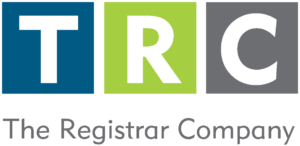Since its first publication in 1999, OHSAS 18001 has been a recognized occupational health and safety management system (OH & SMS) standard against which management systems can be assessed and certified. 19 years later, a new ISO standard has been released to replace OHSAS 18001; this standard is ISO 45001.
ISO 45001 is an OH SMS standard developed by an ISO Project Committee which was published on March 12th 2018. A number of differences are evident between ISO 45001 and OHSAS 18001. Some of the main differences between the two standards are explored below. The experts at The Registrar Company took the time to dissect the new standard to determine the most pertinent differences between the two standards that you need to know.
The first difference concerns its structure. ISO 45001 is based on the ISO Guide 83 (“Annex SL”) which defines a common high level structure, text and common terms and definitions for the next generation of management systems (e.g. ISO 9001, ISO 14001, etc.). This structure aims to facilitate the implementation process and the integration of several management systems in a harmonized, structured and efficient manner. Such structure is as follows:
- Scope
- Normative References
- Terms and Definitions
- Context of the Organization
- Leadership
- Planning
- Support
- Operation
- Performance Evaluation
- Improvement
In the new standard, there is a stronger focus on the organization’s context. With ISO 45001, organizations will have to look beyond their own internal health and safety issues and consider what their interested parties expect from them regarding health and safety.
Read about more differences between OHSAS 18001 and ISO 45001
Read about who needs ISO 45001
Some organizations that use OHSAS 18001 delegate health and safety responsibilities to a safety manager, rather than integrating the system into the organization’s operations. ISO 45001 requires the incorporation of health and safety aspects into the overall management system of the organization, thus driving top management to have a stronger leadership role with respect to the OH&S management system.
ISO 45001 focuses on identifying and controlling risks rather than hazards, as is currently required in OHSAS 18001.
ISO 45001 requires organizations to consider how suppliers and contractors are managing their risks.
In ISO 45001 some fundamental concepts are changed, like risk, worker and workplace. There are also new definitions of terms such as: monitoring, measurement, effectiveness, OH&S performance and process.
The terms “document” and “record” have both been replaced with the term “documented information” in ISO 45001. The standard also states that documented information must be maintained to the extent necessary to have confidence that the processes have been carried out as planned.
In spite of these changes, the overall aim of ISO 45001 remains the same as OHSAS 18001, which is to reduce unacceptable risks and ensure the safety and wellbeing of everyone involved in an organization’s activities.
 At The Registrar Company (TRC), the new ISO 45001 standard and its complexity is our top priority. We are working diligently to offer this standard to our current and future clients, so your organization can remain top of class in health and safety. Learn about we can help your organization achieve ISO 45001 certification in 2019.
At The Registrar Company (TRC), the new ISO 45001 standard and its complexity is our top priority. We are working diligently to offer this standard to our current and future clients, so your organization can remain top of class in health and safety. Learn about we can help your organization achieve ISO 45001 certification in 2019.
Read about more differences between OHSAS 18001 and ISO 45001




